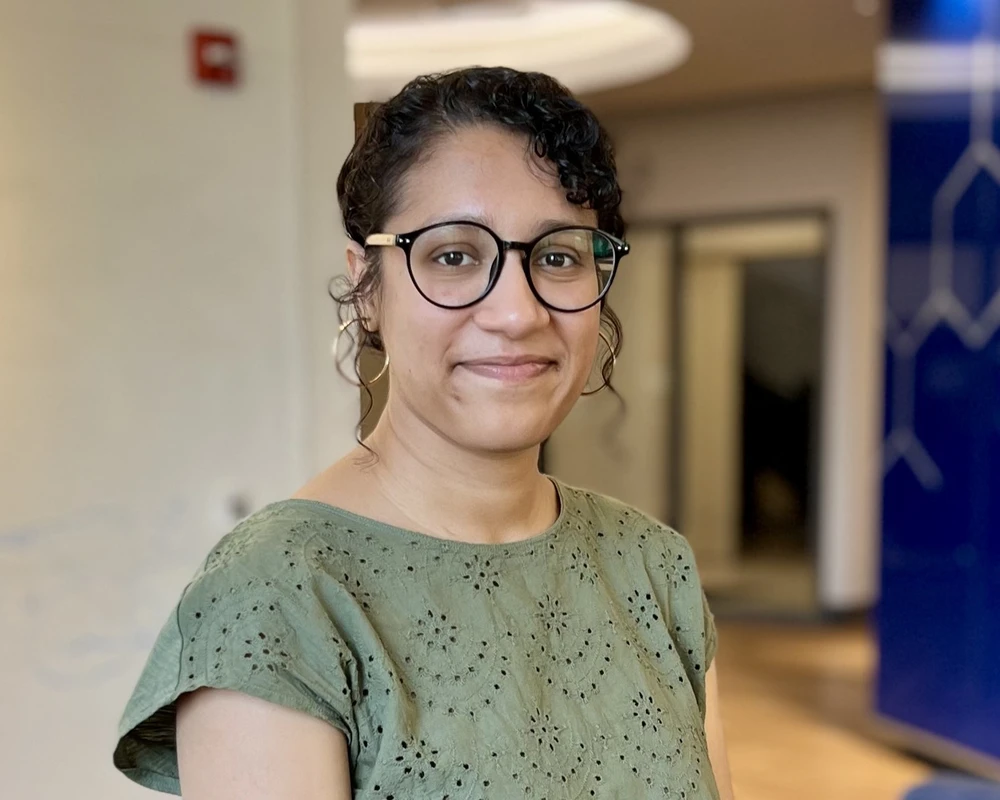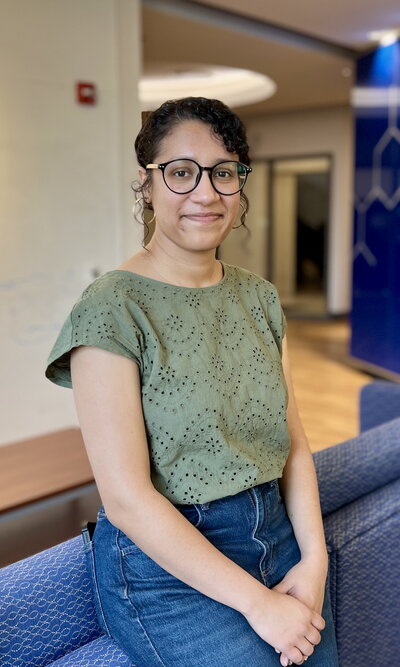

A first-year graduate student, Eliza Asani truly enjoys chemistry, but you won’t find her in the lab. As a computational chemist, she spends most of her time in front of a computer.
That would have surprised Asani several years ago when she was a freshman at the University of Alabama in Huntsville.
“I had no idea what I wanted to do,” said Asani, who enjoyed English and chemistry in high school and had no interest in computer science. That changed when she took a college coding course and then discovered the field of computational chemistry, which is using computer simulations and models to solve chemical problems by applying theoretical chemistry methods. She decided to double major in chemistry and computer science and did an internship at the University of Minnesota where she worked in the Chemical Theory Center.
“It's pretty much all computation. And I really enjoyed that,” Asani said.
The internship solidified her choice to study computational chemistry. She applied to graduate schools and chose to pursue a PhD in chemistry at Illinois.
"Illinois has a really good chemistry program, and I especially like the Theory Center and Professor (Nick) Jackson was a big draw as well. He does a lot of machine learning applications, so I think that's really interesting because that's at the frontier of both where computer science is right now and where chemistry is,” Asani said.
Jackson encouraged Asani to apply for the Department of Energy Computational Science Graduate Fellowship. Asani thought the opportunity might be out of reach because it is such a competitive program, but to her surprise she got the call that she had been selected.
The fellowship provides financial benefits and professional development opportunities to students pursuing doctoral degrees in fields that use high-performance computing to solve complex science and engineering problems.
In addition to financial support, there is a 12-week practicum experience at one of 21 DOE national laboratories or sites, including access to DOE supercomputers. And a rigorous program of study ensures fellows have solid backgrounds in a scientific or engineering discipline plus computer science and applied mathematics. Fellows also participate in an annual program review in Washington, D.C. that offers fellows, program alumni, DOE staff, faculty, and other members of the fellowship community the opportunity to share ideas, support one another and discover research opportunities at DOE laboratories.
Asani said she is very much looking forward to the 12-week practicum. The program typically wants fellows to do their practicum at DOE locations outside their geographical comfort zone and a bit outside of their field of study. A Minnesota native, who’s lived in Alabama and now Illinois, she anticipates spending her 12 weeks in a DOE location toward the East coast or West coast.
“The practicum is really exciting. Forcing yourself to go somewhere totally different and do something totally different, even if you don't end up enjoying that specific application, is going to inspire what you're doing right now. And I think that's something that will be really helpful in the future,” she said.
Asani also looks forward to the additional coursework that is required.
“To take certain courses in other fields like math, statistics, and computing, I'm excited about taking higher level courses in those fields. I just like taking classes and learning,” she said.
The research proposal Asani submitted when applying for the fellowship involves using machine learning to read synthetic polymer sequences – the arrangement of monomers within the polymer chain -- using general analytical techniques like spectroscopy and chromatography. Scientists have very optimized methods to read sequences of natural polymers, like proteins and DNA.
“But when we think about synthetic polymers like plastics, we don’t have those kinds of methods to read their sequences,” she said. “This is a really important field that's coming up.”
Typically, when you synthesize plastics, Asani said, there is no specific sequence, but in the natural world, being really specific about sequence creates functional diversity.
“If we could do the same thing with synthetic polymers, the bounds are unlimited in terms of what kinds of functional control you could get. Could we make plastics that are more degradable, or plastics that are more sustainable, that kind of thing,” Asani said.
Like developing the ability to read sequences of synthetic polymers, Asani said there are problems in chemistry that have a solution, but the computation would take too much time to run the calculation and store all the data to get to the solution.
“Machine learning offers a way to sort of subvert that huge calculation. I think that’s where more of the advances need to be made and that’s why I wanted to join the Jackson group and come to this program,” she said.
Asani said she is keeping an open mind about her thesis research and her ultimate career path, especially considering that she never anticipated majoring in computer science as an undergraduate.
“I think that's something that I've really come to embrace,” she said. “There are so many things that I don't even know about that I could be excited about.”
Whatever her eventual career path, she said she hopes to have the opportunity to teach.
“That's the main goal because I know how much that impacted me,” said Asani, who was very inspired by her high school chemistry teacher, Mr. Meyer. “I had a fun chemistry teacher. He did tons of experiments for us, and he vacuum sealed himself into a garbage bag to illustrate pressure and volume. He is a very good chemistry teacher. Anytime someone asks about chemistry, he's the first person I mention, because he was just an incredible teacher, and I think everyone deserves to be exposed to material in a way that makes you excited about it.”